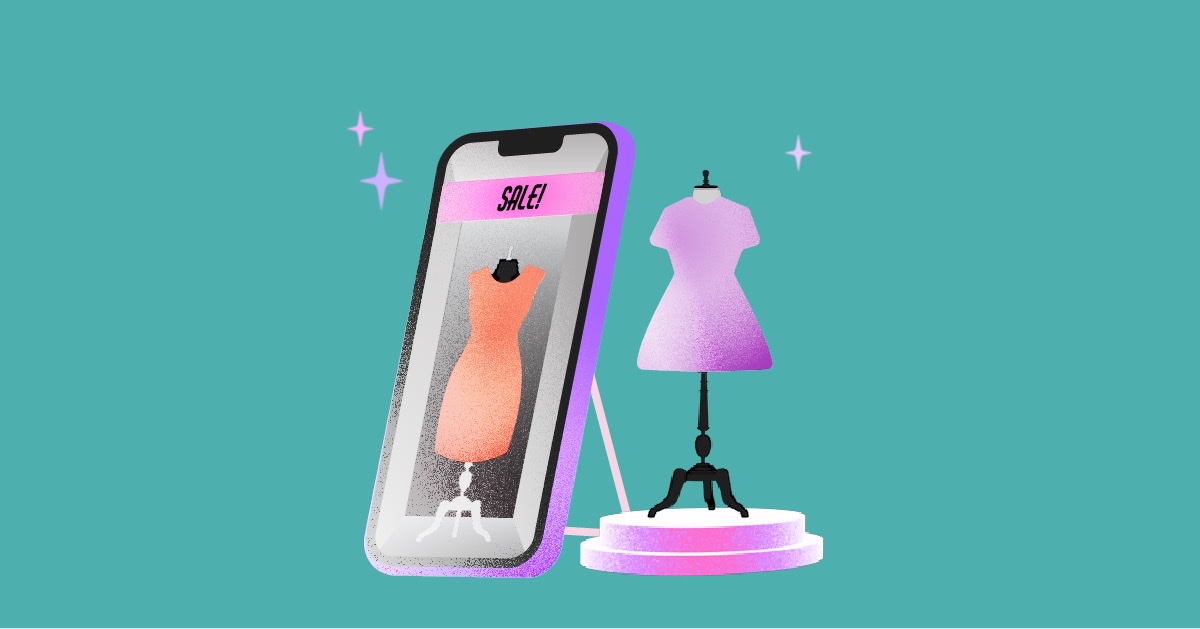How apps customize and shape the post-pandemic retail experience

The pandemic has altered consumers’ standards for convenience, and their comfort level with contact in stores can vary significantly from person to person. As shoppers’ expectations have changed, retailers have been forced to move quickly to keep up.
“Retailers have adopted technology very quickly out of necessity over the past 24 months,” said Jane Cannon, Chief Retail Strategy Officer at NewStore. “Barriers they previously felt were in the way of offering things like buy-online-pick-up-in-store, had to be navigated.”
One key area of innovation that has allowed retailers to meet the varying expectations of their customers has been apps, both consumer- and store associate-facing.
“Retailers that can establish a culture of interaction with their consumers, with an app as the medium, are much more likely to be able to provide the experience that a consumer wants,” said Cannon.
And with that visibility comes other benefits and advantages, all of them helping retailers reimagine the shopping experience in a world transformed.
Apps have been redefined as a channel for direct interaction
The conversation around omnichannel retail and how apps fit in isn’t necessarily new. However, over time and with the changes forced by the pandemic, the conversation has changed, and the role of apps has been redefined accordingly.
Ad position: web_incontent_pos1
“For a long time, we thought consumer apps were an adjunct to e-commerce. They were a way for consumers to shop the website when they weren’t at home or lugging their laptop around,” Cannon explained. “But what the consumer app has now become is a way for consumers to interact directly with stores.”
According to Cannon, it’s becoming more apt to think about the retail experience as omni-brand rather than omnichannel. This new terminology better encompasses the ability of brands and consumers to interact anywhere, at any time and in any way.
“Consumers want to interact with a brand, not a channel. They are looking for a seamless experience when they’re interacting with a brand,” said Cannon. “As a consumer, I now expect to be able to see where there’s inventory available, whether it’s at my preferred store or a different location. I expect my favorite brands to be able to offer things like store pickup or delivery to my home.”
And apps are a tool that can bring all these factors together, giving consumers and store associates alike the ability to check inventory, make purchases and engage meaningfully.
“The consumer app becomes much more powerful because it can interact, not just with the commerce channel, but with the store directly,” said Cannon. “With that capability, as a consumer, my loyalty and affinity for the brand are stronger.”
Ad position: web_incontent_pos2
When store associates are equipped with apps, it allows them to facilitate the level of direct interaction that consumers want.
With the ability to look up inventory and complete purchases in their hand, they are no longer tied to the cash wrap. “Store associates have become more mobile. They can meet the consumer in the aisle to provide that extra level of service to those who want it. And with app technology, retailers can enable consumers to interact directly with the store, even when they’re not there,” said Cannon.
Whether a shopper is in-store or out, apps can help achieve the same overall goal. “The consumer wants to be known, not anonymous,” Cannon explained. “There are app features that allow associates to demonstrate they know their customers, because they’ve shopped there before, or they’ve created a wishlist on the retailer’s website or its app. This information allows associates to provide the consumer with personalized experiences that make shopping more joyful.”
From providing customers with item suggestions based on their tastes to sending them messages when an item on their wishlist is in stock, apps enable associates to maintain meaningful, relevant interaction, regardless of where the consumer is.
Apps are a key tool to drive outcomes for retailers
App technology is often discussed from the customer’s perspective and how it will improve their shopping experience. Beyond that outcome, if the customer experience is improved, retailers can also expect the positive outcomes (and returns) that come with repeat purchases and eventual loyalty.
On the top line, there is an almost immediate lift in average order value driven by the fact that app technology “essentially enables the store associate to shop with the customer,” said Cannon. “The ability for the associate to have better accuracy of inventory in their hand allows them to offer the customer more than they might be looking to buy. They can do it in an endless aisle way. An item might not be in the store, but they might be able to offer it from somewhere else.”
This insight into inventory drives outcomes on the bottom line too. “Retailers can use inventory in a way that prevents extreme markdowns and liquidations because they’re better able to sell it,” Cannon said.
And with all of the data that apps are collecting, whether from transactions, or items being added to wishlists or noted as being out of stock, retailers can improve their decision-making for the future. “Maybe they notice that an item customers are inquiring about is never in stock. Having the ability in the app, in real-time, to flag that is invaluable data for retailers. Over time, they can look at seasonal influences or where they fell short as they do their merchandising plan for the next season.”
All of this is built on the culture of interaction that retailers can foster through mobile app technology. As shoppers cautiously adjust to a post-pandemic world and also maintain habits and expectations they’ve adapted over the last two years, apps can help retailers deliver positive shopping experiences, wherever the consumer may be.
Sponsored By: NewStore

